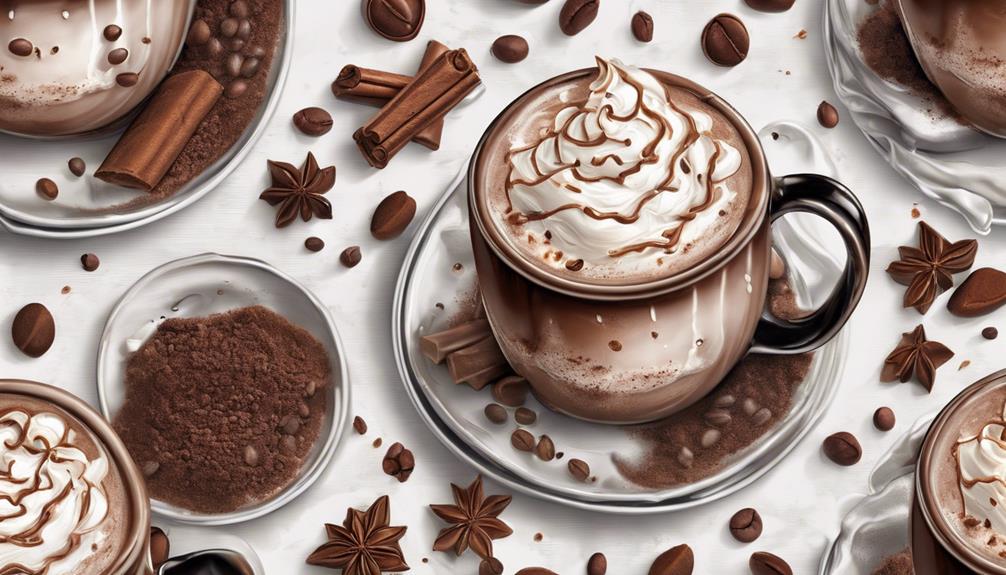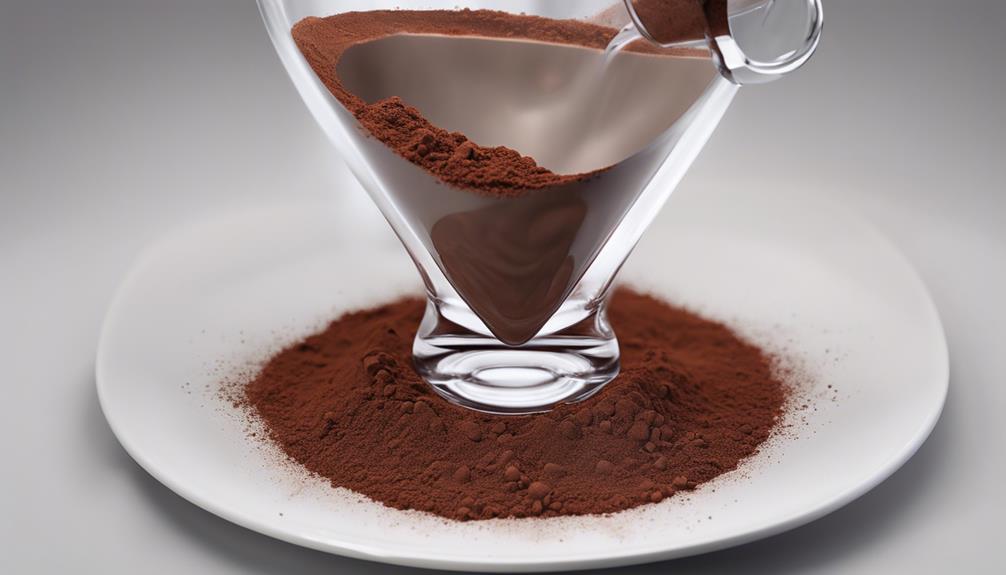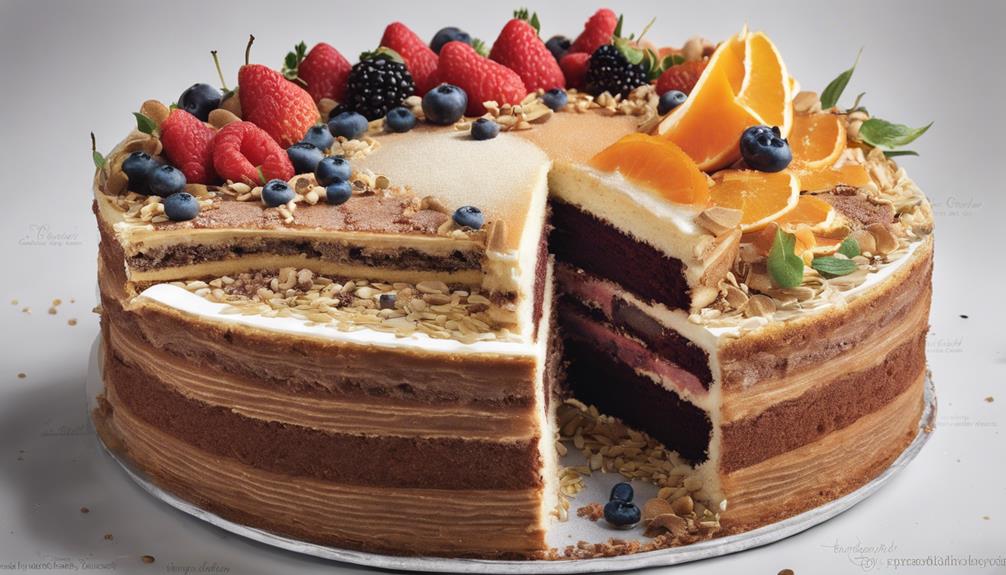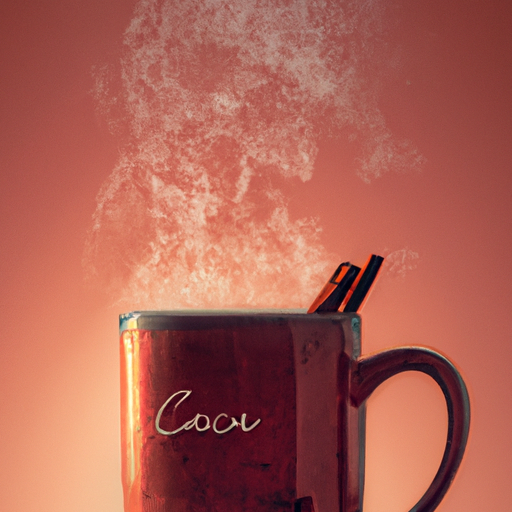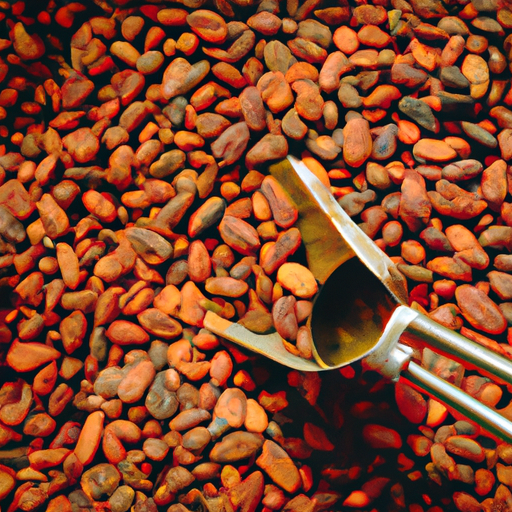Hot chocolate typically contains minimal caffeine, with popular mixes containing 5 mg or less per serving, making it a preferred low-caffeine option. Unlike coffee, which can have 95-200 mg in a 240 ml serving, hot chocolate ranges from 5 to 15 mg, less than tea. The amount of caffeine in hot chocolate can be influenced by factors such as the type of cocoa and how it is prepared, while decaf options provide an option for those seeking caffeine-free enjoyment. Drinking hot chocolate before bed can help aid sleep due to the theobromine content, which promotes relaxation. Are you curious to learn more about hot chocolate and its caffeine content?
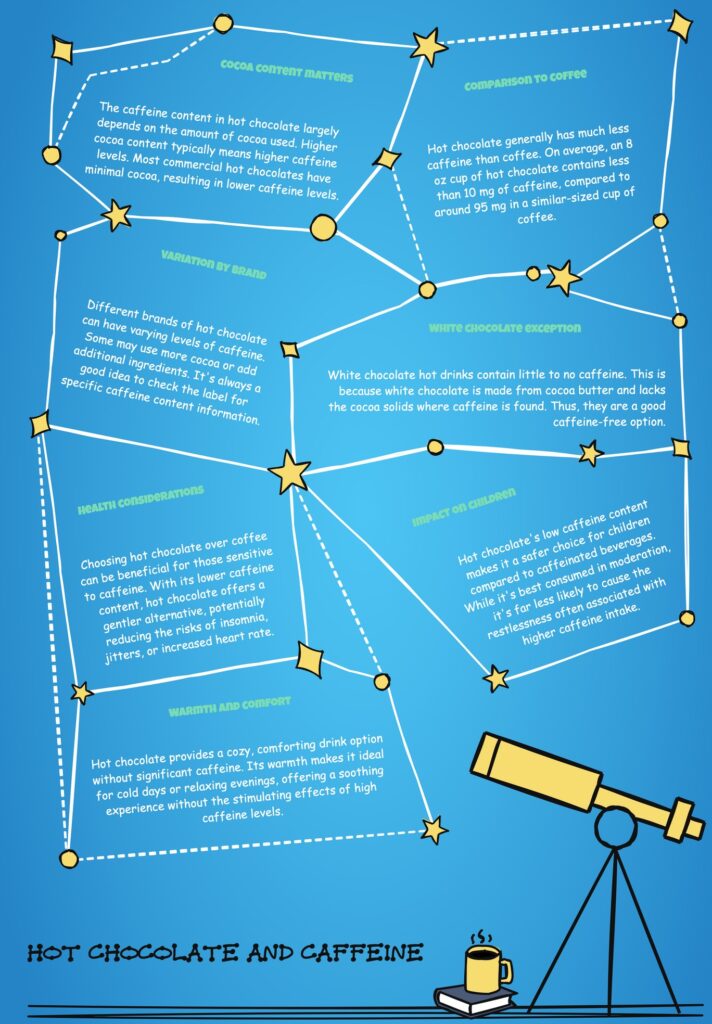
Key Takeaways
- Hot chocolate contains minimal caffeine levels, typically ranging from 5 to 15 mg per serving.
- Unlike coffee, hot chocolate has significantly lower caffeine content, making it a suitable low-caffeine option.
- Decaffeinated hot chocolate options are available with 0-2 mg of caffeine per cup for those sensitive to caffeine.
- Theobromine in hot chocolate aids in relaxation and sleep, enhancing bedtime rituals without caffeine disturbances.
- Ready-to-drink decaf chocolate milk and specific decaf hot chocolate mixes offer caffeine-free alternatives.
Hot Chocolate and Caffeine Content
When considering the caffeine content in hot chocolate, it’s important to note that this beloved beverage typically contains minimal levels of caffeine. Hot chocolate is a comforting drink made from cocoa and milk, known more for its soothing qualities than its stimulant effects. Brands and preparation methods can influence the caffeine content, with packaged mixes usually having 5 mg or less per serving.
Even a tall Starbucks hot chocolate, which is considered to have a higher caffeine content compared to homemade versions, only contains around 20 mg of caffeine, making it a relatively low-caffeine choice when compared to coffee. The addition of milk to hot chocolate can further dilute the caffeine content, making it a milder option for those looking to enjoy a warm and cozy drink without the jitters often associated with higher caffeine levels.
Caffeine Levels in Hot Chocolate
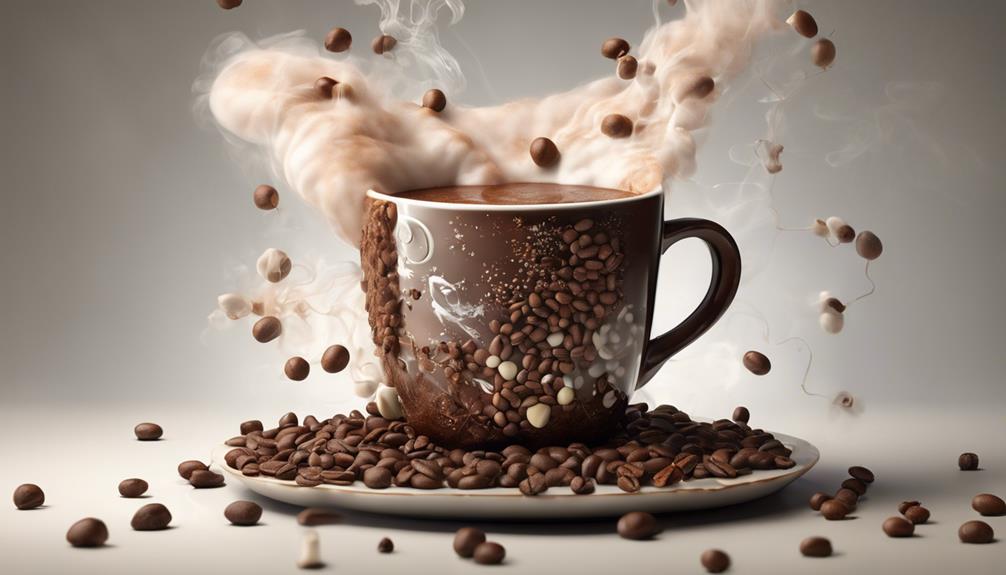
The caffeine levels in hot chocolate vary depending on the brand and preparation method, typically ranging from 5 to 15 mg per 240 ml serving. When it comes to the caffeine content in hot chocolate, here are some key points to keep in mind:
- Packaged Hot Chocolate Mixes: They generally contain 5 mg or less of caffeine, making them a good choice for those who want to limit their caffeine intake.
- Starbucks Hot Chocolate: A tall Starbucks hot chocolate has around 20 mg of caffeine, slightly higher than the average homemade or packaged hot chocolate.
- Milk Dilution: Adding milk to your hot chocolate can dilute its caffeine content, so if you prefer a milder dose of caffeine, contemplate mixing in some milk.
Understanding the caffeine levels in hot chocolate can help you make informed choices based on your preferences and caffeine sensitivity. Enjoying a cozy cup of hot chocolate can be a delightful treat, especially when you know how much caffeine you’re consuming.
Comparing Hot Chocolate to Coffee
Comparing the caffeine content of hot chocolate to coffee reveals a significant difference in their stimulant levels. Hot chocolate typically contains 5-15 mg of caffeine per 240ml serving, while coffee packs a much stronger punch with an average of 95-200 mg in the same serving size.
For example, a tall Starbucks hot chocolate has around 20 mg of caffeine, whereas a Pike Place coffee from the same chain contains about 235 mg. The caffeine content in hot chocolate is considerably lower than that in coffee, providing a milder caffeine boost.
This makes hot chocolate a more suitable option for individuals seeking to limit their caffeine intake compared to the robust jolt coffee delivers. So, if you’re looking for a gentler caffeine kick to cozy up with, hot chocolate might be the perfect choice for you.
Hot Chocolate Vs. Tea: Caffeine Comparison
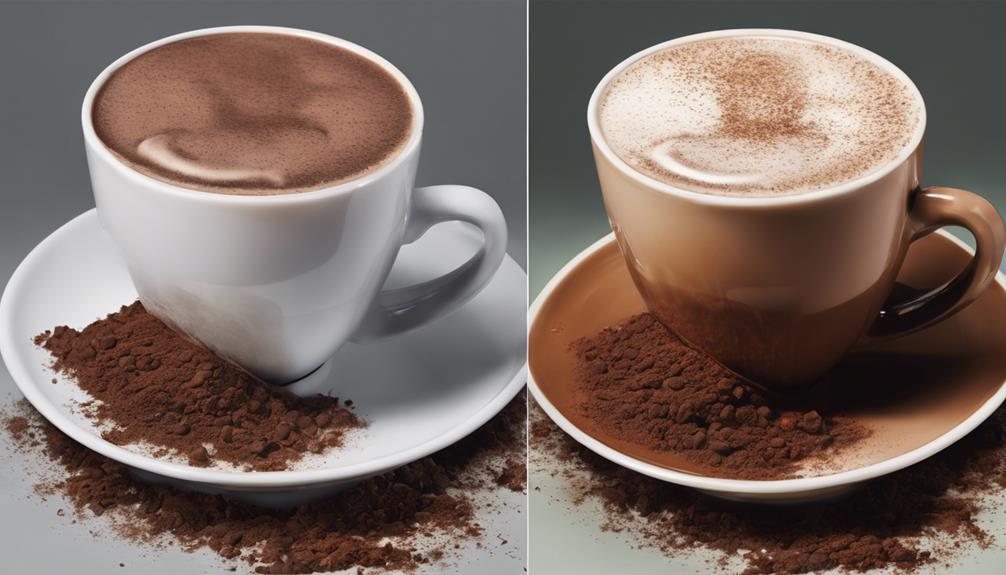
In my experience, the caffeine content in hot chocolate pales in comparison to that found in various types of tea. Here are some key points to take into account when comparing hot chocolate to tea:
- Caffeine Levels: A tall Starbucks chai tea latte contains 70 milligrams of caffeine, notably higher than what you’d find in a cup of hot cocoa. Even regular hot chai tea with milk has 21.6 milligrams of caffeine, making it a more caffeinated option than hot chocolate.
- Variability: The caffeine content in tea can vary depending on the type of tea and how it’s prepared. This means that some teas may have higher caffeine levels than others, so it’s crucial to check the specifics for the tea you consume.
- Overall Comparison: When it comes to caffeine content, tea generally surpasses hot chocolate. So, if you’re looking for a more caffeinated option, tea might be the way to go over hot chocolate.
The Truth About Hot Chocolate and Caffeine
Revealing the truth about hot chocolate and caffeine, it’s clear that this beloved beverage typically contains minimal amounts of caffeine. When you indulge in a cup of hot chocolate made from packaged mixes, you’re looking at 5 mg or less of caffeine per serving. Even at Starbucks, a tall hot chocolate only packs around 20 mg of caffeine, making it a milder choice compared to coffee.
The caffeine content in hot chocolate gets diluted by the milk added during preparation, further reducing its impact. If you’re keen on steering clear of caffeine altogether, ready-to-drink chocolate milk provides a caffeine-free alternative to hot chocolate. With its comforting appeal and lower caffeine levels, hot chocolate becomes a cozy option for those aiming to keep their caffeine intake in check.
Decaffeinated Hot Chocolate Options
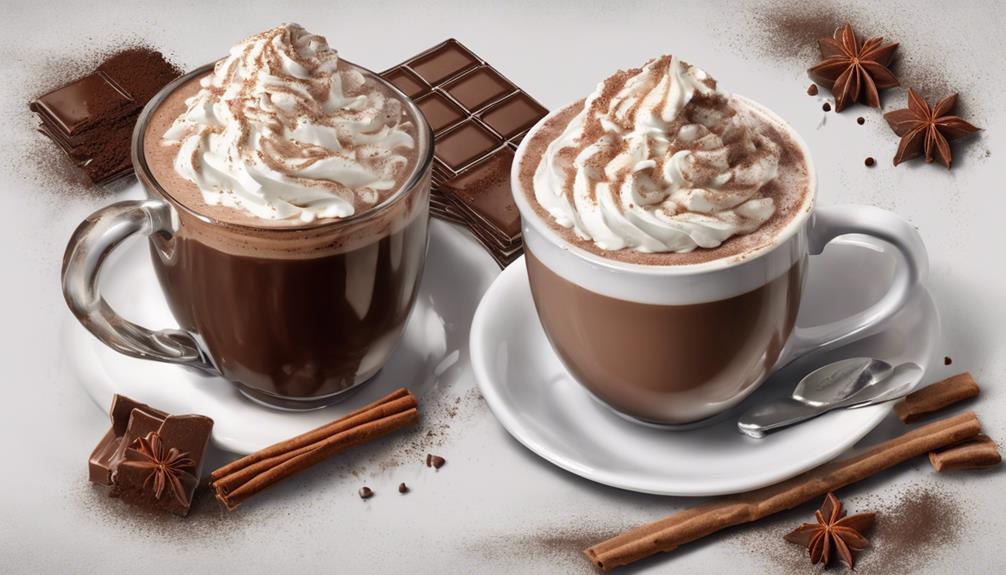
Occasionally, decaffeinated hot chocolate options provide a caffeine-free alternative for those seeking a comforting and soothing beverage without the stimulating effects of caffeine. Decaffeinated hot chocolate mixes offer a delightful way to enjoy the rich flavors of cocoa without the jolt of caffeine. Here are some key points to ponder when exploring decaf hot chocolate options:
- Caffeine Content: Decaffeinated hot chocolate typically contains minimal caffeine, ranging from 0-2 mg per 8 oz. cup. This makes it an excellent choice for individuals looking to reduce their caffeine intake while still indulging in a warm treat.
- Hot Chocolate Mixes: Some brands offer decaffeinated versions of their hot chocolate mixes, allowing consumers to enjoy the familiar taste of hot chocolate without the stimulating effects of caffeine. These mixes are easy to prepare and perfect for cozy evenings.
- Caffeine-Free Alternative: Ready-to-drink decaf chocolate milk provides hot chocolate enthusiasts a convenient and caffeine-free alternative. It offers a smooth and creamy texture, making it a comforting choice for those who prefer their beverages without the buzz of caffeine.
Hot Chocolate Caffeine Myths Debunked
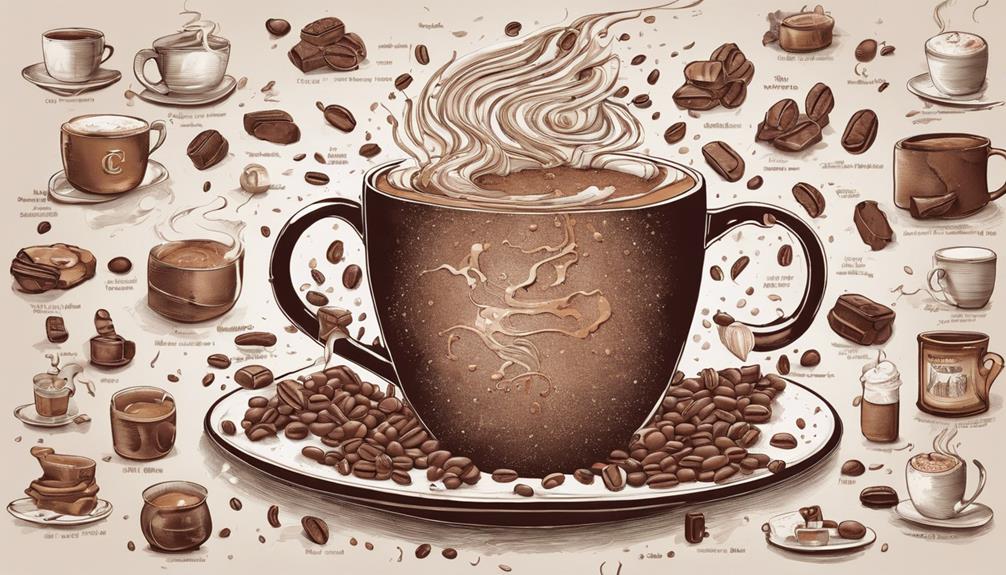
Hot chocolate is often believed to be high in caffeine, but in reality, it usually contains minimal amounts, ranging from 0-20 mg per serving. Understanding the actual caffeine content in hot chocolate can help dispel common myths about its stimulant effects and health implications.
Exploring decaf options or adding milk to your hot chocolate can further customize your caffeine intake based on your preferences.
Caffeine Content in Hot Chocolate
When enjoying a cup of hot chocolate, it’s important to acknowledge that its caffeine content usually varies from 5 to 15mg per 240ml serving. Here are some insights to help you understand the caffeine content in your favorite hot beverage:
- Packaged hot chocolate mixes generally contain 5mg or less of caffeine, making them a suitable choice for limiting caffeine intake.
- Starbucks’ Tall hot chocolate contains around 20mg of caffeine, slightly higher than the average homemade or packaged hot chocolate.
- Adding milk to your hot chocolate can dilute its caffeine content, making it a milder option than other caffeinated beverages like coffee or tea.
Health Effects of Caffeine
Discussing the health effects of caffeine in hot chocolate can provide valuable insights into the myths surrounding its impact on our well-being. Hot chocolate typically contains 5-15mg of caffeine per 240ml serving, with variations based on the type of cocoa used. This comforting beverage is known for its lower caffeine levels compared to coffee and tea, offering a gentle energy boost without excessive intake risks.
When considering the health benefits, hot chocolate can be a soothing choice due to its minimal caffeine content. Nonetheless, being mindful of potential side effects, especially for those sensitive to caffeine, is crucial. By understanding the caffeine content and its effects, we can enjoy hot chocolate responsibly as part of a balanced diet.
Decaf Hot Chocolate Options
Decaf hot chocolate options provide a caffeine-free alternative for individuals seeking to enjoy the flavor without the stimulating effects. Here are three key points to keep in mind when opting for decaf hot chocolate:
- Low Caffeine Content: Decaf hot chocolate typically contains less than 2 mg of caffeine per 8-oz. serving, making it suitable for those looking to reduce their caffeine intake.
- Avoiding Stimulating Effects: Choosing decaf hot chocolate can help individuals steer clear of the stimulating effects of caffeine, offering a comforting and relaxing experience.
- Sensitivity and Intake Reduction: Decaf hot chocolate is a great option for those sensitive to caffeine or aiming to reduce their overall caffeine consumption while still enjoying a warm and delightful beverage.
Exploring Caffeine in Hot Cocoa

Let’s take a closer look at the caffeine content in hot cocoa.
We’ll analyze how much caffeine is typically found in different brands and serving sizes, discussing its impact on health.
Comparing the caffeine levels in hot chocolate to coffee can help us understand why hot chocolate is often chosen for its comforting qualities rather than its energy boost.
Caffeine Content Analysis
Exploring the caffeine content in hot cocoa reveals that it typically ranges from 5 to 15 mg per 8 oz. serving, influenced by factors such as the type of cocoa and preparation method. Here are some key points to take into account:
- The type of cocoa used: Darker chocolates generally contain more caffeine than milk chocolate varieties due to their higher cocoa content.
- Preparation method: Instant hot chocolate mixes usually have lower caffeine content compared to homemade hot cocoa made with cocoa powder.
- Caffeine per serving: Pay attention to the serving size, as the caffeine content can vary based on the amount consumed and any additional ingredients like milk or whipped cream.
Impact on Health
When considering the impact of caffeine in hot cocoa on health, it’s important to acknowledge the minimal caffeine content usually present in this soothing beverage. Hot chocolate typically contains minimal caffeine, ranging from 5-15 mg per 240 ml serving. Ready-to-drink mixes usually have 5 mg or less of caffeine. Hot chocolate from popular chains like Starbucks may contain around 20 mg of caffeine in a tall serving. The addition of milk can dilute the caffeine content compared to pure cocoa, making it a milder option for those sensitive to caffeine. Below is a table summarizing the caffeine levels in different types of hot chocolate:
| Type of Hot Chocolate | Caffeine Content (mg) |
|---|---|
| Regular Hot Chocolate | 5-15 |
| Ready-to-Drink Mixes | <5 |
| Starbucks Hot Chocolate | 20 |
Hot chocolate is a comforting choice with lower caffeine levels compared to coffee or tea.
Comparison With Coffee
Hot chocolate offers a milder caffeine than coffee, making it a popular choice for those seeking a gentler energy boost. When comparing hot chocolate to coffee regarding caffeine content:
- Hot chocolate contains much less caffeine than coffee, with only 5-15mg per 240ml serving compared to coffee’s 95-200mg.
- Starbucks’ Tall hot chocolate has around 20mg of caffeine, while a Pike Place coffee from Starbucks contains 235mg of caffeine.
- The caffeine content in hot chocolate varies based on the type of cocoa used and the preparation method.
Choosing hot chocolate over coffee can provide a less intense caffeine kick, making it a comforting and soothing alternative for those looking to enjoy a warm beverage with a touch of energy.
Hot Chocolate and Sleep Quality

Sipping on a warm cup of hot chocolate before bedtime enhances relaxation and contributes to a restful night’s sleep. Hot chocolate is a low-caffeine beverage, making it a suitable choice to enjoy before heading to bed.
Unlike high-caffeine drinks, the minimal caffeine content in hot chocolate means it’s unlikely to cause sleep disturbances or insomnia. Theobromine, a compound found in hot chocolate, can have a soothing effect on the body, aiding in sleep quality.
You can create a cozy and comforting routine that promotes relaxation without the risk of caffeine-related sleep disruptions by choosing hot chocolate as a bedtime beverage.
Caffeine-Free Hot Chocolate Choices
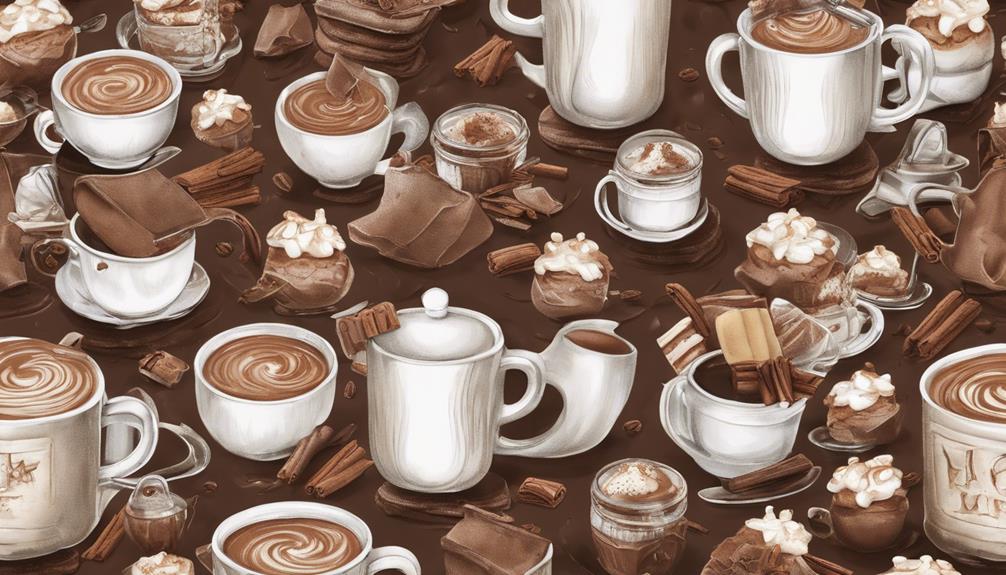
Looking for a caffeine-free hot chocolate option? Consider ready-to-drink chocolate milk or Mexican chocolate-based hot drinks with minimal caffeine levels.
Alternatively, hot chocolate mixes usually have very low caffeine content, making them a cozy choice before bedtime.
Enjoy a comforting cup of hot chocolate without the buzz of caffeine, it is perfect for a relaxing evening treat.
Non-Caffeinated Hot Cocoa
When seeking a caffeine-free alternative to hot cocoa, one can opt for ready-to-drink chocolate milk as a comforting choice. Here are three delightful options to contemplate:
- Classic Milk Chocolate Flavor: Enjoy the rich and creamy taste of milk chocolate in a convenient ready-to-drink format.
- Variety of Brands: Explore different brands offering non-caffeinated chocolate milk to find your favorite.
- Chilled or Warm: Indulge in the goodness of chocolate milk either chilled on a hot day or warmed up for a cozy treat.
Ready-to-drink chocolate milk provides a delicious way to savor the flavors of cocoa solids without the caffeine, making it a perfect choice for a soothing hot cocoa alternative.
Decaf Hot Chocolate Options
For those in search of a caffeine-free indulgence, decaf hot chocolate presents a delightful option with its rich and chocolatey flavor profiles. When looking for decaf hot chocolate choices, popular options include Swiss Miss Sensible Sweets Hot Cocoa Mix and Ghirardelli’s decaf hot chocolate mix, both offering a satisfying taste without the jolt of caffeine. To make your own decaf hot chocolate at home, consider using decaffeinated cocoa powder mixed with warm milk for a comforting and soothing beverage. Decaf hot chocolate typically contains less than 5 mg of caffeine per serving, making it a suitable choice for those looking to enjoy a cozy drink without the stimulating effects of caffeine.
| Decaf Hot Chocolate Options | Description | Caffeine Content |
|---|---|---|
| Swiss Miss Sensible Sweets Hot Cocoa Mix | Popular choice with a rich flavor profile | < 5 mg per serving |
| Ghirardelli | Offers a rich, chocolatey decaf mix | < 5 mg per serving |
| Homemade Option | Make your own using decaffeinated cocoa powder and milk | < 5 mg per serving |
Frequently Asked Questions
Does Hot Chocolate Have a Lot of Caffeine?
Hot chocolate doesn’t have a lot of caffeine. It usually contains around 5-15mg per serving, which is much less than coffee. The caffeine amount can vary based on the type and brand of hot chocolate.
Does Hot Chocolate Keep You Awake Like Coffee?
Hot chocolate can keep me awake, but not like coffee. It contains less caffeine, about 5-15mg per cup, so it’s less likely to disrupt sleep. The theobromine in it gives a mild energy boost.
Can You Get Hot Chocolate Without Caffeine?
I can make hot chocolate without caffeine by choosing decaf cocoa or non-caffeinated milk. Some mixes are labeled caffeine-free. Toppings like marshmallows or syrups won’t add caffeine. Homemade recipes let me control caffeine amounts. Checking labels or asking at cafes helps find caffeine-free options.
Is There More Caffeine in Hot Chocolate Than Decaf Coffee?
Absolutely, hot chocolate generally contains more caffeine than decaf coffee. It offers a cozy indulgence with a touch of stimulant, making it a delightful choice. The rich cocoa flavor complements the subtle boost, perfect for a warm hug in a cup.
Do Both Regular and Decaf Hot Chocolate Contain Caffeine?
Regular hot chocolate contains caffeine, as the cocoa used in it naturally contains this stimulant. However, decaf hot chocolate is made with decaffeinated cocoa, which has a significantly lower hot chocolate caffeine content. So, if you’re looking to avoid caffeine, opt for decaf hot chocolate instead.
Conclusion
To sum up, hot chocolate is a delightful treat that can be savored without concerns about caffeine. Unlike coffee or tea, hot chocolate usually doesn't have substantial amounts of caffeine.
So feel free to enjoy a comforting cup of hot cocoa before bedtime without worrying about it causing you to stay awake. Just like a cozy blanket on a chilly evening, hot chocolate provides comfort and relaxation without the jolt of caffeine.

